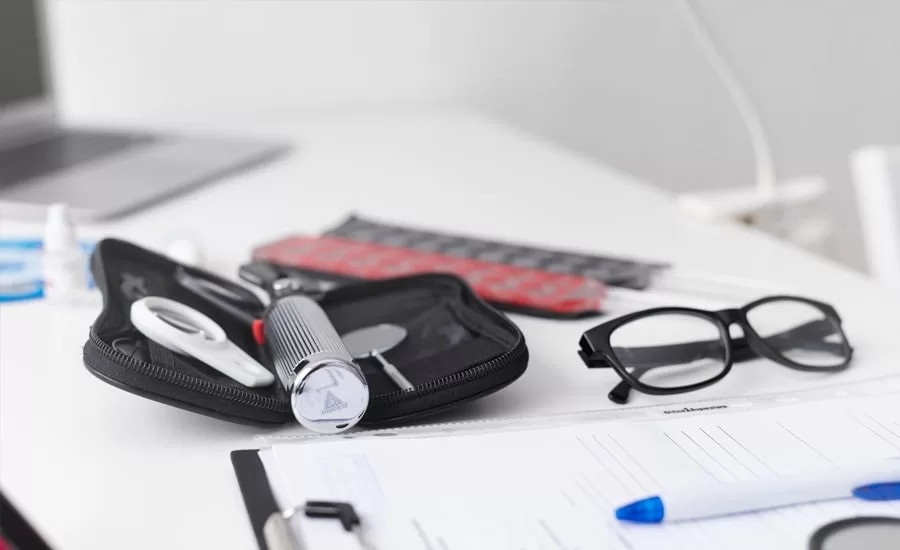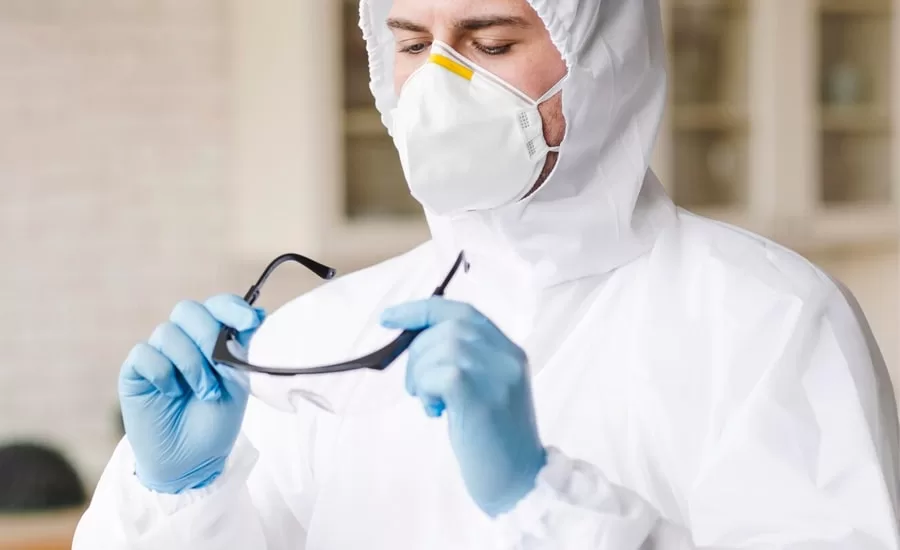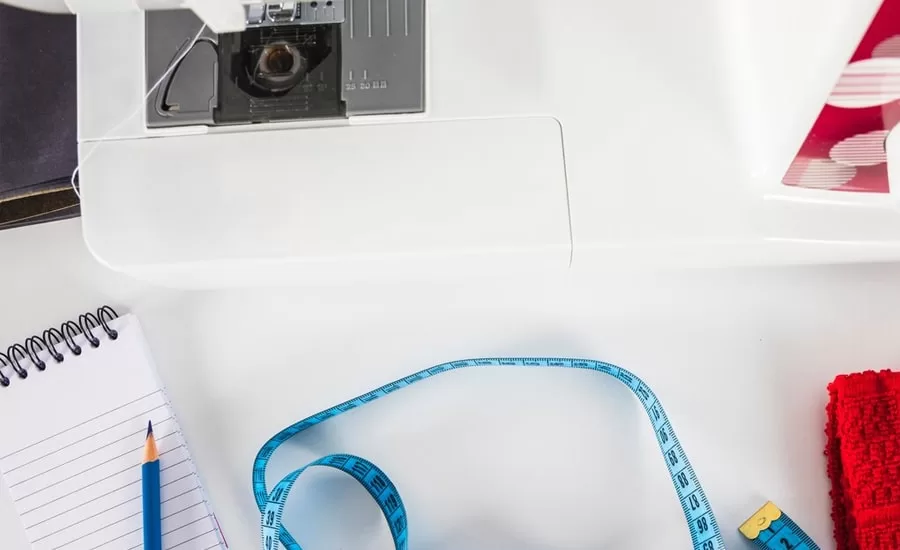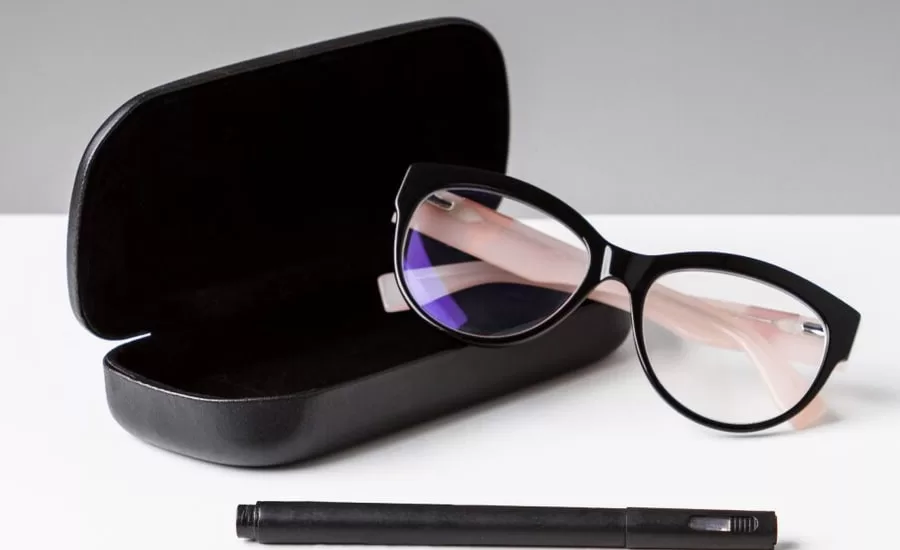In our daily lives, many of us use glasses to improve vision or ensure the safety of our eyes. Therefore, having a good and safe pair of glasses is crucial for us. Apart from daily care, it is also necessary to regularly maintain our glasses. In this article, I will provide some suggestions for everyone, hoping that through reading, you can understand how to properly maintain your glasses. Through correct maintenance, not only can we extend the lifespan of glasses, but we can also maintain clear vision, enhance wearing comfort, and reduce the risk of eye diseases.

1.Cleaning Methods for Safety Glasses and Safety Goggles
1.Cleaning Methods for Safety Glasses
(1)Using Cleaning Solution and Eyeglass Cloth:Apply professional eyeglass cleaning solution, spray it on the surface of the glasses, and then gently wipe with a soft eyeglass cloth. This helps remove grease and dirt, keeping the lenses clear.
(2)Avoiding Tissues or Clothing:Avoid using tissues, clothing, or other rough materials to wipe glasses to prevent scratching the lens surface. Choose a soft and non-damaging eyeglass cloth.
2.Cleaning Methods for Safety Goggles
(1)Rinsing with Warm Water:Rinse the goggles with warm water first to remove surface dust and particles, reducing the risk of scratching during wiping.
(2)Using Mild Soap Water:Apply some mild soap water to the surface of the goggles, then gently wipe with a soft cloth. Avoid using abrasive or strongly acidic/alkaline cleaners.
(3)Regular Disinfection:If the goggles come into contact with bacteria or viruses, use specialized goggle disinfectant. Follow the product instructions to ensure cleanliness and hygiene.
(4)Regular Inspection:Periodically check the overall condition of the goggles, including lenses and frames. Ensure there are no loose or damaged parts, and repair or replace them promptly.

2.Storage Advice for Safety Glasses and Safety Goggles
1.Using Dedicated Cases
When not in use, place safety glasses or goggles in dedicated eyeglass or goggle cases. This helps prevent dust, dirt, and scratches.
2.Avoiding Stacking
Avoid stacking multiple pairs of glasses or goggles to prevent friction and scratching. Storing each pair separately reduces the risk of damage.
3.Away from Heat and Direct Sunlight
Avoid exposing glasses or goggles to high temperatures, such as inside a car. Also, prevent prolonged exposure to direct sunlight to avoid damage to lenses and frames.
4.Regular Box Cleaning
If using eyeglass or goggle cases, regularly clean the inside of the box to ensure cleanliness and prevent the introduction of dust or dirt during storage.
5.Avoiding Humid Environments
Prolonged storage in a humid environment may cause mold or bacteria growth on glasses or goggles. Choose storage locations that avoid humid conditions.

3. Regular Inspection Recommendations for Safety Glasses and Safety Goggles
1.Examine Lens Condition
Regularly inspect the lens surface of safety glasses or goggles to ensure there are no scratches, cracks, or other damages. Damaged lenses may affect visibility and should be repaired or replaced promptly.
2.Check Frames and Temples
Periodically examine the frames and temples of the glasses to ensure there are no loose parts. If you notice loose or damaged screws, it’s advisable to tighten or replace them promptly to maintain the stability of the glasses.
3.Adjust Frame Fit
Ensure the frame of the glasses is properly adjusted to maintain comfort and stability. If you experience discomfort while wearing the glasses, adjustments to the temples or nose pads may be needed.
4.Inspect Goggle Seal
The core of using safety goggles is to ensure a good seal to prevent dust or particles from entering. Therefore, check the edges and seals of the goggles to ensure there is no wear or damage.
5.Test Protective Features
If safety glasses or goggles have specific protective features (such as shock resistance or anti-fog), periodically test these functions to ensure they are working effectively. Make sure they provide adequate protection when needed.
6.Check Nose Pads and Ear Clips
Glasses often have nose pads or ear clips; ensure they are not deformed or worn. This helps maintain wearing comfort.
7.Replace Aging Components
If components of the glasses show signs of aging or damage, replace them promptly. This includes nose pads, ear clips, screws, etc., to ensure the integrity of the glasses.
8.Inspect Goggle Transparency
For those using goggles, regularly check the transparency of the lenses to ensure there are no blur or scratches caused by prolonged use.

4. Replacement Recommendations for Safety Glasses and Safety Goggles
1.Regular Lens Replacement
Lenses tend to wear out over time, so consider replacing the lenses of safety glasses or goggles based on their wear and frequency of use. Aging lenses may lead to blurry vision, impacting safety performance.
2.Replace Damaged Frames
If the frames of your glasses or goggles show obvious damage, deformation, or cracks, replace the entire frame promptly. A damaged frame may compromise the stability and protective effectiveness of the eyewear.
3.Replace Aging Components
Periodically check components of glasses or goggles, such as nose pads, ear clips, screws, etc. If you find signs of aging or looseness, replace them promptly to ensure the normal functionality of the eyewear.
4.Replace Damaged Coatings
If your glasses have special coatings (such as anti-scratch or anti-fog) and the coatings are damaged, consider replacement. Damaged coatings may affect clarity and protective performance.
5.Replace Aging Spring Hinges
Some glasses use spring hinge designs, so regularly check their elasticity and durability. If spring hinges age or lose elasticity, replace them promptly to maintain frame flexibility.
6.Consider Goggle Replacement as Needed
If using goggles for specific tasks or activities, consider replacement based on changes in protective performance and transparency. Ensure goggles consistently provide effective protection.
7.Replace Aging Rubber Pads
Glasses or goggles often use rubber pads; regularly check their elasticity and durability. Aging rubber pads may lead to discomfort, necessitating timely replacement.
8.Promptly Replace Missing Components
Regularly check for missing components on glasses or goggles, such as screws, nose pads, etc. Replace them promptly to ensure the integrity and functionality of the eyewear.

5. Advice on Choosing Suitable Eyeglass Cloths
1.Microfiber Cloth
Microfiber cloth is a soft and delicate material suitable for cleaning the surface of eyeglasses. It effectively removes fingerprints, oil, and dirt without scratching the lenses.
2.Optical-Grade Eyeglass Cloth
Designed specifically for cleaning eyeglasses, optical-grade eyeglass cloths are made from ultra-fine fiber materials, offering excellent absorbency and cleaning effectiveness. They are an ideal choice for maintaining high-quality glasses.
3.Non-Woven Cloth
Non-woven cloth is a soft material that does not produce fibers, suitable for wiping the surface of eyeglasses to ensure cleanliness without leaving fiber residues.
4.Silk Eyeglass Cloth
Silk eyeglass cloths are usually thin and delicate, suitable for polishing and cleaning. However, they may be slightly less effective in removing oil.
5.Natural Fiber Eyeglass Cloth
Choosing natural fiber materials such as cotton or linen can be an environmentally friendly option. If using this type of cloth, ensure it is clean to avoid introducing impurities during wiping.
6.Multi-Layered Structure Eyeglass Cloth
Some eyeglass cloths have a multi-layered structure, providing more effective dirt removal and better cleaning results. These cloths often have enhanced absorbency and anti-static properties.
7.Eyeglass Cloth with Cleaning Solution
Some eyeglass cloths come pre-treated with a cleaning solution, allowing you to clean and remove dirt simultaneously. Ensure that the cleaning solution is safe for your eyeglass material.
8.Darker Colored Eyeglass Cloth
Opt for eyeglass cloths with darker colors as they tend to better conceal dirt, appearing cleaner for a longer period.
9.Avoid Using Tissues
Refrain from using tissues or other rough materials to wipe eyeglasses, as they may scratch the lenses or coatings. Always use dedicated eyeglass cloths.
10.Regularly Replace Eyeglass Cloths
If you notice your eyeglass cloth becoming old or dirty, replace it regularly to maintain effective cleaning.

6. Importance of Regular Eyeglass Maintenance
1.Prolong Lifespan
Regular maintenance helps keep eyeglasses in overall good condition, extending their lifespan. Routine cleaning, adjustments, and component replacements ensure glasses remain in optimal working order.
2.Maintain Clear Vision
Regularly cleaning eyeglass lenses removes fingerprints, oil, and dust, ensuring clear vision. This is crucial for activities such as driving, working, and daily tasks.
3.Enhance Comfort
Periodic adjustments to the fit of eyeglasses, including frames, nose pads, and temples, contribute to increased comfort and reduced discomfort during wear.
4.Prevent Eye Damage
Maintaining eyeglasses prevents issues arising from aging, looseness, or damage that could lead to eye strain or injury. Damaged glasses may compromise vision clarity.
5.Ensure Accurate Prescription
For prescription glasses, regular checks ensure the accuracy of the prescription, providing the correct vision correction. This is vital for maintaining eye health.
6.Prevent Eye Conditions
Regular eye check-ups through eyeglass maintenance can detect and correct eye problems, reducing the risk of eye conditions.
7.Reduce Discomfort Symptoms
Regularly cleaning eyeglasses reduces eye fatigue, headaches, and other discomfort symptoms associated with dirty lenses.
8.Improve Protective Effectiveness
For glasses with specific protective features, such as safety glasses or goggles, regular checks and maintenance of these features ensure they provide effective protection when needed.
9.Save on Repair Costs
Regular maintenance helps identify potential issues early, allowing for timely repairs and avoiding more expensive repairs or replacements when glasses are severely damaged.

7. Common Misconceptions and Correct Approaches
1.Cleaning Cloth
(1)Misconception: Using clothing or tissues to wipe glasses.
(2)Correct Approach: Use a dedicated eyeglass cleaning cloth to prevent scratching the lens surface.
2.Cleaning Solution
(1)Misconception: Using cleaning solutions containing alcohol or strong acids.
(2)Correct Approach: Use specialized eyeglass cleaning liquid without alcohol or strong acidic components to avoid damaging coatings.
3.Cleaning Frequency
(1)Misconception: Cleaning glasses only when needed.
(2)Correct Approach: Cultivate the habit of regularly cleaning glasses to maintain clear vision, reduce eye fatigue, and discomfort.
4.Eyeglass Storage
(1)Misconception: Storing glasses in pockets.
(2)Correct Approach: Use eyeglass cases to prevent friction and damage with other items.
5.Adjusting Glasses
(1)Misconception: Not adjusting glasses regularly.
(2)Correct Approach: Regularly check and adjust glasses to ensure a proper fit for increased comfort.
6.Work Environment
(1)Misconception: Ignoring eye hazards in the work environment.
(2)Correct Approach: Wear appropriate protective eyewear in environments with potential eye risks to prevent injuries.
7.Regular Checks
(1)Misconception: Assuming prescriptions remain unchanged.
(2)Correct Approach: Regularly check eyeglass prescriptions to ensure accuracy and make adjustments or replacements as needed.
Conclude
In daily life, glasses serve as essential tools for correcting vision and protecting our eyes, making their maintenance particularly crucial. Diligently caring for glasses not only helps extend their lifespan but also ensures clear vision, enhances wearing comfort, and reduces the risk of eye diseases. It is not only about the health of our vision but also about the overall experience of using glasses in our daily routines. Therefore, by establishing good habits of glasses maintenance, we can better protect our vision and enjoy a clear and comfortable visual experience.